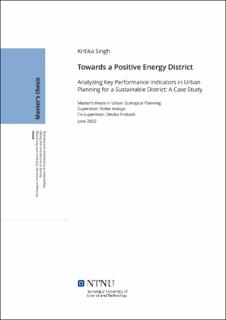| dc.description.abstract | Urban neighborhoods that work toward carbon-free, climate-neutral goals, attain a
positive energy balance, and aspire for excess renewable energy production are
defined as Positive Energy Districts (PEDs). PEDs are designed to contribute to
sustainable urban growth, and it is also true that sustainable urban growth can lead
to the creation of PEDs. Essentially, PEDs can be achieved by developing and
following sustainable infrastructure and urban planning practices including spatial,
transportation, and social planning. As per JPI Urban Europe, the key aspects of
PEDs along with the funding include implementation strategies, stakeholders,
climate transition, governance, legal frameworks, as well as technological and
system innovation.
As the name suggests, PED mainly comprises positive energy (energy management)
and district (neighborhood) elements. The district aspect encompasses urban
planning that constitutes strategic planning for sustainability implications
consisting of environmental, social, economical, mobility, and
transportation-related factors, all of which involve the users and its people. The
positive energy aspect of a PED enables local energy production resulting in energy
efficiency and potential cost savings for its residents.
The thesis examines the performance of urban planning factors with the potential to
develop an existing neighborhood toward a PED. This research study explores the
overall sustainability of a neighborhood in terms of mobility, social, economic, and
environmental factors. The performance of these factors is measured through Key
Performance Indicators (KPIs), which measure the attributes of sustainability. These
contributing KPIs have been studied on a scale through a case study of Hammarby
Sjöstad (HS) in Stockholm. The perception of stakeholders is collected for evaluating
KPIs. These KPIs have been thoroughly analyzed as designed during the planning
stage and post-implementation to evaluate their success. The findings of this thesis
can be employed as guidelines for setting benchmarks and goals for the development
of PEDs in cities throughout the world. | |
